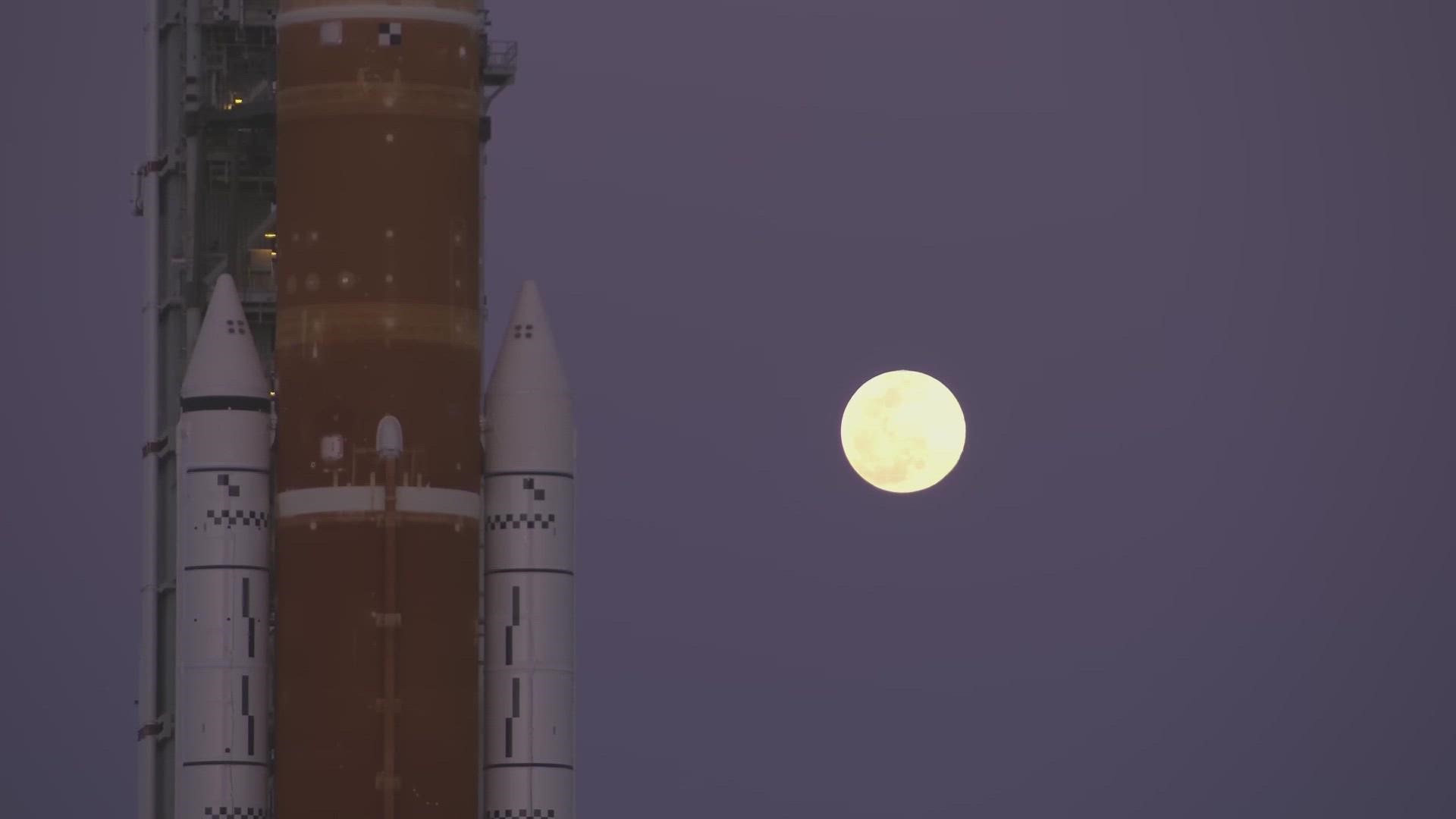TEXAS, USA — Despite being the president of a company that manufactures large scales, Harold Thomas has never measured the weight of the world, just the rocket that’s bound for another world.
Arlington-based General Electrodynamics Corporation, or GEC, is part of the team taking America back to the moon.
The uncrewed Artemis I mission was scheduled to launch Monday, marking the United States first trip to the moon in 50 years. But NASA decided to scrub the launch at least until Friday due to an engine bleed.
“This is one of 10 platforms that we sold to NASA,” Thomas said, pointing to one of the scales created for the Artemis program.
GEC’s scales, each capable of measuring up to 80 thousand pounds, were used by NASA to weigh its new moon rocket, the Space Launch System, or SLS.
GEC is far from the only company that contributed to Artemis.
Without SeyTec, a woman-owned aerospace hardware distributor in North Richland Hills, the entire mission would fall apart.
Literally.
“We have more fasteners on the Orion capsule than anyone else,” said SeyTec vice president of sales and marketing Ronnie Childs.
SeyTec provided most of the nuts and bolts that hold together the Orion capsule, the spacecraft at the top of the rocket where, on future missions, astronauts will ride.
“It’s very exciting and we’re very honored to take part in the whole thing,” Childs said.
According to NASA, altogether, at least 34 North Texas companies had a hand in getting back to the moon. This map shows every company that contributed.
However, NASA says the moon is only a pit stop.
“Our sights are not set on the moon,” said one NASA official. “Our sights are set clearly on Mars.”
That makes this a full circle moment for GEC.
When NASA first went to Mars in 1964 with the Mariner IV mission, GEC built the cameras that took the first pictures ever of the red planet.
Now they, SeyTec and dozens of other North Texas companies are taking us further.
“It’s rewarding to play a small part and a role in that process,” Thomas said.
It’s just one of many small steps toward the next big leap.

